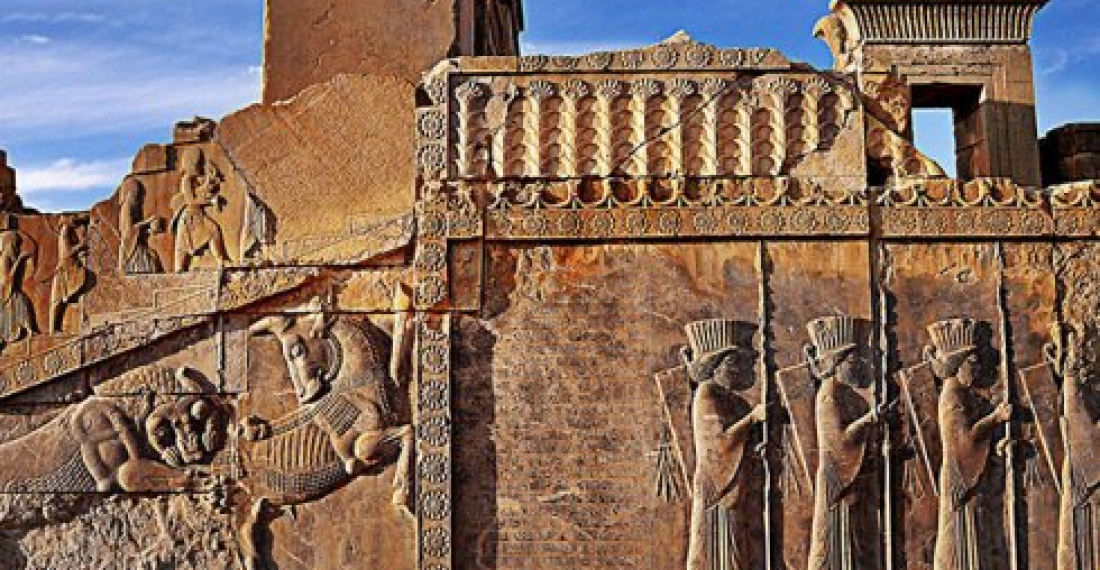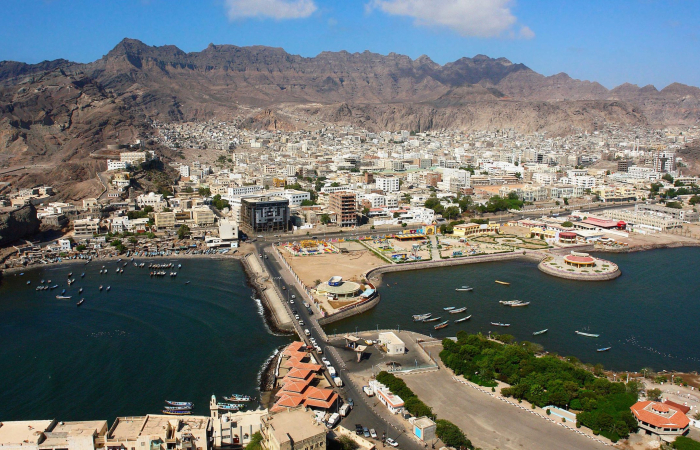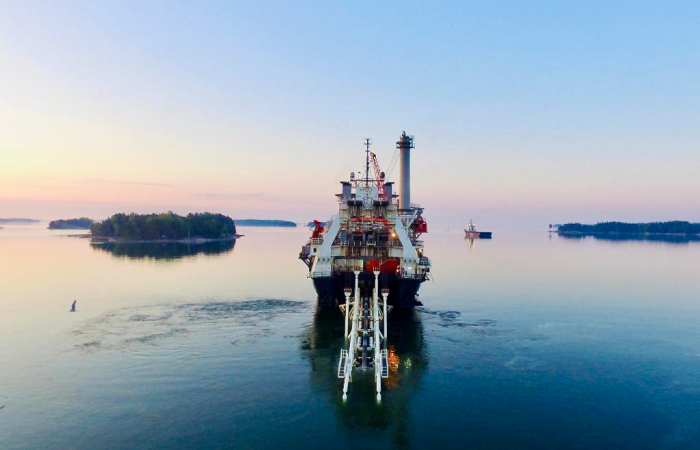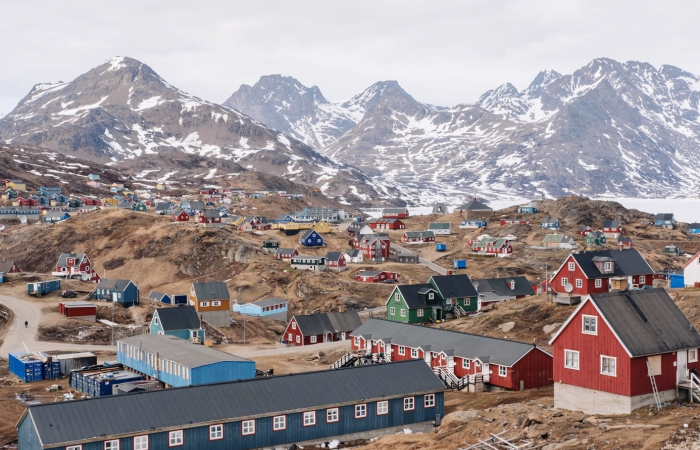Geography is a key to understanding the Iranian grand strategy and its ambitions. The strategic outlook of its current leadership is very much rooted in the country's ancient and medieval history, writes Emil Avdaliani in this analysis for commonspace.eu
In early 620s AD, the period just before the Arab invasions of the Middle East, the Sasanian Shah, Khusro II, with his large armies was besieging Constantinople, Byzantium's capital, while his armies had already occupied Egypt, Syria, Palestine and other former Byzantine lands. This was a momentous event in world history as the Iranians had not reached the Mediterranean Sea since the end of the Achaemenid Empire in 330 BC. However, Iranian success proved to be a short one, and for the next 1400 years the Iranian ambitions were checked, until the reports emerged last week that Iran-backed forces moved closer to control the Syria-Iraq border. This is an exceptional moment as Iran would again be able to have a contiguous land bridge from its proper territory, through north Iraq and Syria, right to the Mediterranean coast.
From now on, the Iranians will be able to link-up with their closest allies in Lebanon, Hezbollah. Iran is steadily transforming into a powerful geopolitical player whose influence will be projected over hundreds and maybe thousands of kilometers beyond its borders. The South Caucasus, as a region close to Iran, will feel firsthand the changed dynamics in the Middle East.
What are the Iranian geopolitical interests, and how does the South Caucasus feature in them?
To start, geography is a key to understanding the Iranian grand strategy and its ambitions. Quite often a simple look at the geographic map of a country or region gives a perspective of what a state's interests are. Take the example of the Middle East, the geographic map of which reveals the three most visible features: Anatolia, the Arabian Peninsula and the Iranian Plateau. Each is almost synonymous with the states located on those territories: Turkey, Saudi Arabia and Iran. Each has its large ambitions throughout the Middle East, and the behavior of each is more or less conditioned and moderated by its location, geographic features, neighbors, etc. However, none of those behaviors is so much contingent upon those aspects as that of modern Iran.
Iran's major population centers are surrounded by almost impregnable mountains and deserts, as well as water barriers. To the west and north-west are the Zagros Mountains, essentially separating Iran from the resource-rich and fertile Iraq. To the north the Elburz Mountains and Armenia's mountainous lands have always served as a defensive shield. The Caspian Sea in the north and the Arabian Sea in the south are yet more impregnable barriers. To the east and north-east, the harsh climate of Afghanistan and Pakistan, alongside Turkmenistan's semi-barren steppe lands, have kept Iran's provinces more or less safe (except for occasional attacks by nomadic peoples).
Therefore, this very fact of being geographically contained, and at the same time defended by geographic features, still continues to define the Iranian grand strategy from the ancient Persian empire to modern Iran. Iran's mountains and deserts have made it almost impossible to conquer and then keep the country under control. Several great conquerors tried. The Mongols and, later on Tamerlane, successfully invaded the Iranian plateau, but in order to keep it they either had to deploy tens of thousands of troops, which they could not, or try to co-opt the local population by allowing them to participate in the governance of their country, which they did. The same goes for the most successful conqueror of Iran, Alexander the Great. Although he conquered it, in order to keep the state he co-opted the local elites. However, even then, once Alexander died, Iran quickly regained its independence.
This advantageous mountainous and desert geography has however also limited the projection of Iranian power abroad. Due to poor geographic conditions, there has been no economic or military reason to project Iranian power into Central Asia, or Afghanistan and Pakistan. Although Iranians were quite active in Georgia, Armenia and modern-day Azerbaijan until the coming of the Russians in the late 18th century, the South Caucasus Mountains, rivers and gorges limited Iran's potential. Thus, strategically, the most advantageous territory for Iran to project its power to has been the western frontier - or modern-day Iraq (Mesopotamia) - always rich in population and natural resources and therefore worth controlling.
Indeed, history shows how crucial Iraq has been in Iran's calculus. Take as an example the Achaemenid Empire, followed by Parthia and the Sasanian State: they all hung to Mesopotamia and even had their capital Ctesiphon located along the Euphrates River near modern-day Baghdad.
Iranians have been always worried about not allowing a foreign presence in the territories surrounding the Iranian plateau. Any foreign influence close to the heart of Iran would be a strategic weakening of the Iranian State. This leads us to Iran's modern behavior, and to why Tehran is so much interested in Iraq, the South Caucasus, Central Asia and Afghanistan. The US presence in Iraq and Afghanistan, the Russians in Central Asia, and potential EU/NATO presence in the South Caucasus, are the worst-case scenarios that Iran has always worked hard to avoid.
The outstanding virtue of the modern Iranian State is that its strategic outlook is very much rooted in the country's ancient and medieval history. True, beyond geographic reasons explaining the need to dominate the surrounding territories, there are also historical precedents. The Achaemenid, Parthian, Sasanian, Safavid and subsequent dynasties all tried to keep Iraq, the South Caucasus, south Central Asia and parts of Afghanistan. Only the Achaemenid Empire extended its borders further in all directions, reaching the Mediterranean and Black seas. The latter would, in turn, explain Iranian involvement in modern-day Syria and Lebanon, and the race to extend its footprint to the Mediterranean coast. Moreover, Tehran's involvement in Yemen might seem to fall out of any logic, but even there it has a past precedent when in the late 570s AD., the Iranian Shahan Shah Khusro Anushirwan invaded southern parts of the Arabian Peninsula.
Geopolitical imperatives rarely change, and this is well reflected in Iran's foreign policy. Despite the changed ideological rhetoric, modern-day Iran is pursuing the same set of external policy goals as did its distant predecessors.
source: Emil Avdaliani teaches history and international relations at Tbilisi State University and Ilia State University. He contributed this analysis for commonspace.eu
photo: The ancient Persian city of Persepolis (archive picture)







